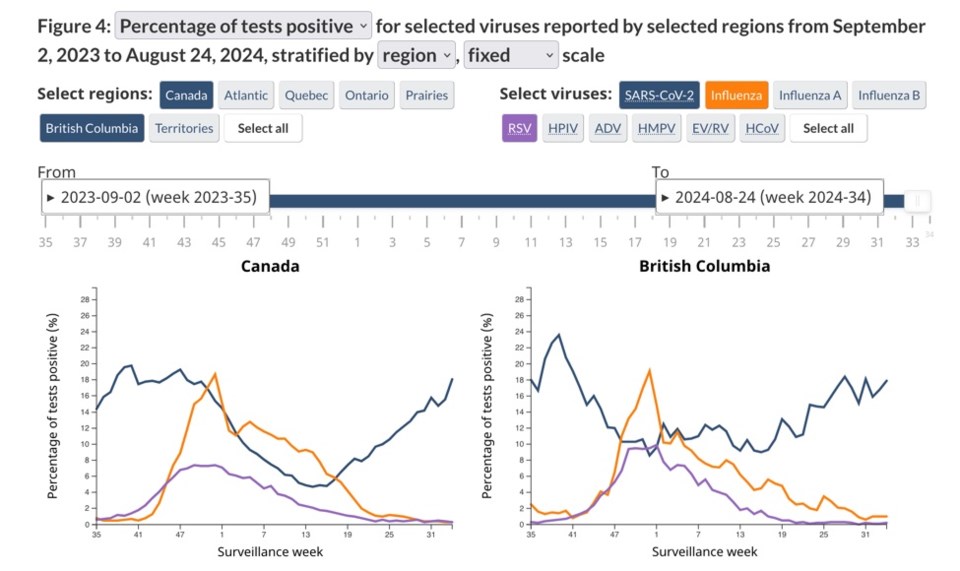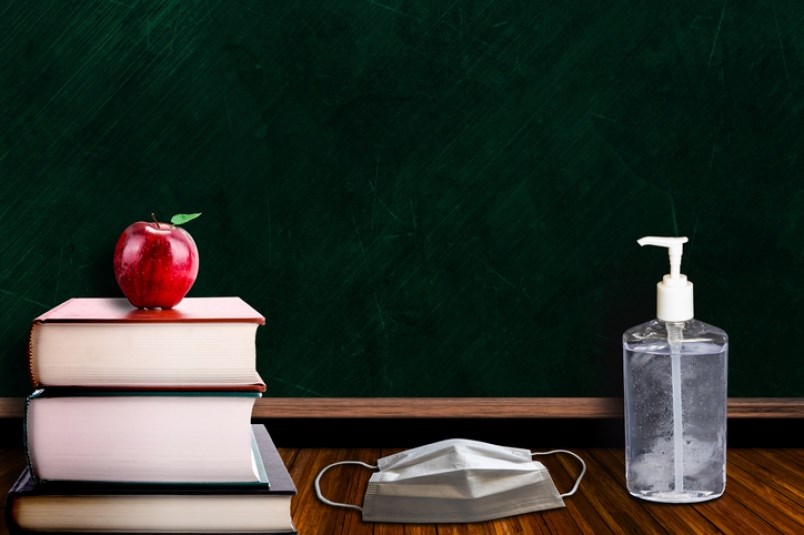The Editor:
We can disagree on many things, but all of us should be able to agree on this simple fact:
"Sick children can’t learn, sick teachers can’t teach." - Amanda Hu, community advocate
Once again children and youth in B.C. are returning to school during a COVID surge.
Needless to say what will follow is predictable. Sadly, it was preventable, had we prioritized the rights of children to life, health, safety and education and child development during an ongoing pandemic.
Make no mistake, the emergency phase may be over, but COVID-19 is not.
B.C. preschool and school children, their families and teachers will yet again be infected with COVID-19 this fall. That is, unless they were recently infected, or they are part of the minority of families who continue to use all available layers of protection to avoid a (re)infection.
Last year in B.C., updated COVID-19 vaccines became available only after Thanksgiving.
By then, infections had already peaked. This year again, unless things change, the newest COVID-19 vaccines will likely only be available too late for many B.C. school children, their families and their teachers.
B.C. is not alone. The other provinces and territories are also failing children with schools restarting when the transmission of SARS-CoV-2 is high and yet another more contagious sub variant, KP.3.1.1, is spreading freely.
However, If you are in B.C., you’d be hard pressed to find up to date COVID-19 information.
As of May 2, the BCCDC declared the respiratory virus season over and switched its COVID-19 Situation Report from weekly to monthly. It’s as if someone thought limiting data in the summer would make COVID-19 disappear, or perhaps help it become seasonal.
Thankfully, the Government of Canada has continued to report Respiratory virus trends. As shown in the graph below, unlike RSV and Influenza, SARS-CoV-2 does not stop spreading with the arrival of summer (surveillance week 25). Maybe your family has already learned this.

The reported laboratory test positivity rate as of Aug. 24 was 17.9 per cent in B.C., same as last year when school reopened. This number is an under estimation of the true level of infections in B.C. communities given testing is restricted to healthcare settings (EDs, hospitals and congregate settings outbreaks) while community rapid tests results are not being recorded.
By comparison, BCCDC’s last reported COVID-19 Situation Report is from July 27, 2024, too long ago to be of much use to parents and teachers. The next one is out today, Sept. 5, after B.C. schools’ resume. It’s really difficult to manage one’s risk of COVID-19 without any timely and easily accessible data.
Thanks to Dr. Tara Moriarty, an infectious disease researcher and associate professor at the University of Toronto, faculty of Dentistry, the Canadian COVID-19 Forecast for Aug. 31 to Sept. 13, 2024, now confirms that B.C. is in the severe category, with estimates of about one in every 27 people infected or roughly 196,900 - 224,800 infections this week.
This is higher than the national COVID-19 forecast and represents the highest hazard level of any Canadian province and territory during this time period. As B.C. schools restart, this translates to likely one person infected in a class of 26 students plus a teacher.
This is a rinse and repeat of last fall and the ones prior during this ongoing COVID-19 pandemic. How long can we keep on re-infecting school children and teachers?
Again, we can disagree on many things but all of us should be able to agree on this simple fact:
"Sick children can’t learn and sick teachers can’t teach." - Amanda Hu
There is another way. It involves cleaning the air that our children and their educators share and breathe. The accumulated evidence is there, “respiratory viruses” are breathed in.
Worth reminding that even though SARS-CoV-2’s enters via the respiratory tract, it is a vascular virus that can impact every organ system of the body, and its effects can last well after the acute phase of the illness is over. This is true for adults, adolescents and children, though the presenting symptoms may differ.
This school restart should have been different.
In April, the BC Green Caucus introduced the Clean Air Act. A private member bill, it “proposes that both indoor and outdoor environments be monitored and regulated for air quality, especially in places frequented by vulnerable groups such as children, students, and the elderly.”
This bill addresses pollution, wildfire smoke and infectious aerosols. It passed first reading, but when the second reading will occur is anyone’s guess.
In late May, the Healthy Environment and Climate Change (HECC) team of VCH Public Health co-produced with Fraser Health a guidance document on Ventilation and Indoor Air Quality for Schools and Childcare Facilities.
It marks a significant departure from prior BC public health COVID-19 recommendations and states, “Many respiratory infections are transmitted through the air from a person infected with a virus or bacteria. Ventilation and air filtration may help to reduce transmission of respiratory infections, particularly in crowded, poorly ventilated spaces.”
Many of B.C.’s schools are” crowded and poorly ventilated spaces”, especially the portables and schools without any mechanical HVAC.
In June, at the Educational Facility Managers Association BC’s Annual Conference, Stephen McNichols, the engineer on the Ventilation Technical Advisory Panel for the Ministry of Education and Child Care, presented the latest ASHRAE (American Society of Heating, Refrigerating, and Air-Conditioning Engineers) Standard 241, Control of Infectious Aerosols.
This standard was issued by ASHRAE in June 2023 to establish equivalent clean airflow requirements to reduce the risk of disease transmission through exposure to infectious aerosols in buildings and spaces (e.g. schools, hospitals, residential homes) during an epidemic or in a pandemic like COVID-19.
Then in early August, the BC Ministry of Education and Child Care updated its HVAC guidance to school districts and included ASHRAE’s Standard 241.
These slow steps towards addressing clean air in schools and in childcare facilities gave me hope that this year, B.C. schools restart would actually look different.
Unfortunately, so far none of these new guidances have translated into any meaningful improvements to the indoor air quality in B.C. schools.
Until today, Suzy Mah, a Vancouver School Board Trustee, was herself unaware of the new VCH/FH guidance on Ventilation and Indoor Air Quality in Schools and Childcare Facilities. Meanwhile the pandemic continues, and parents still have no idea what is the quality of the air in their school children’s classroom.
History will not be “kind” to the adults charged with keeping kids healthy and learning in school in the time of COVID-19.
- Lyne Filiatrault, retired B.C. emergency physician



